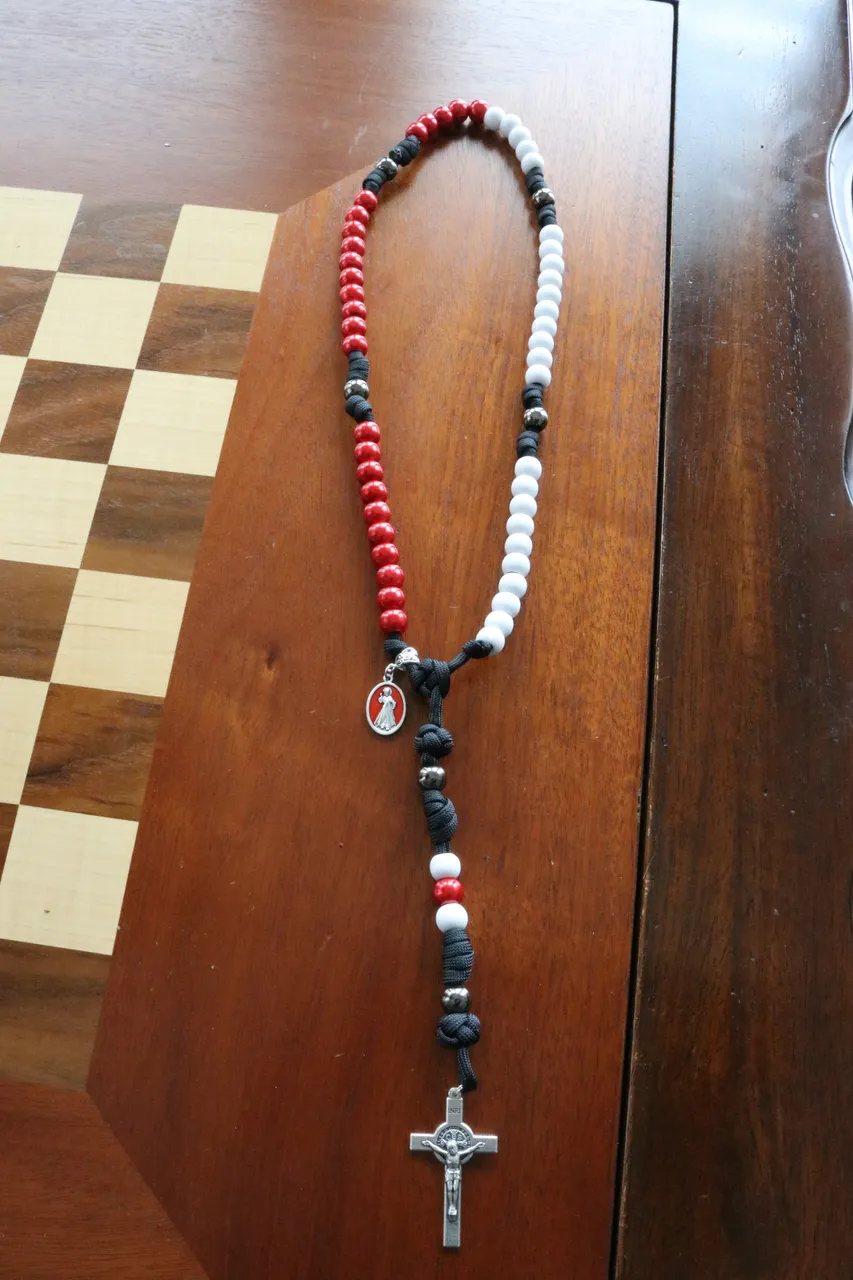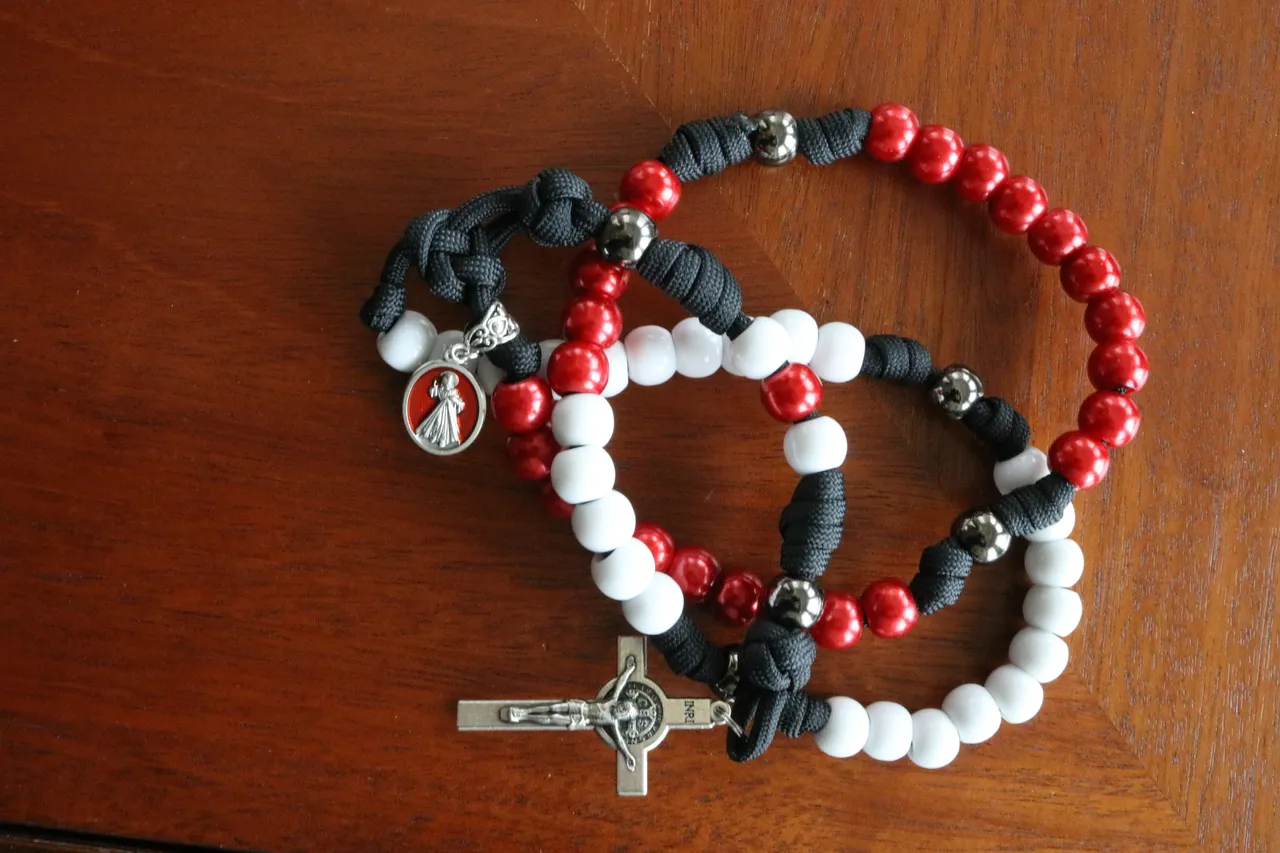
This post will take you step-by-step through the process of making a red and white rosary that can be used for praying the Chaplet of The Divine Mercy. This chaplet can be prayed on any standard rosary, but this rosary will better represent the image seen by Saint Faustina in 1931:
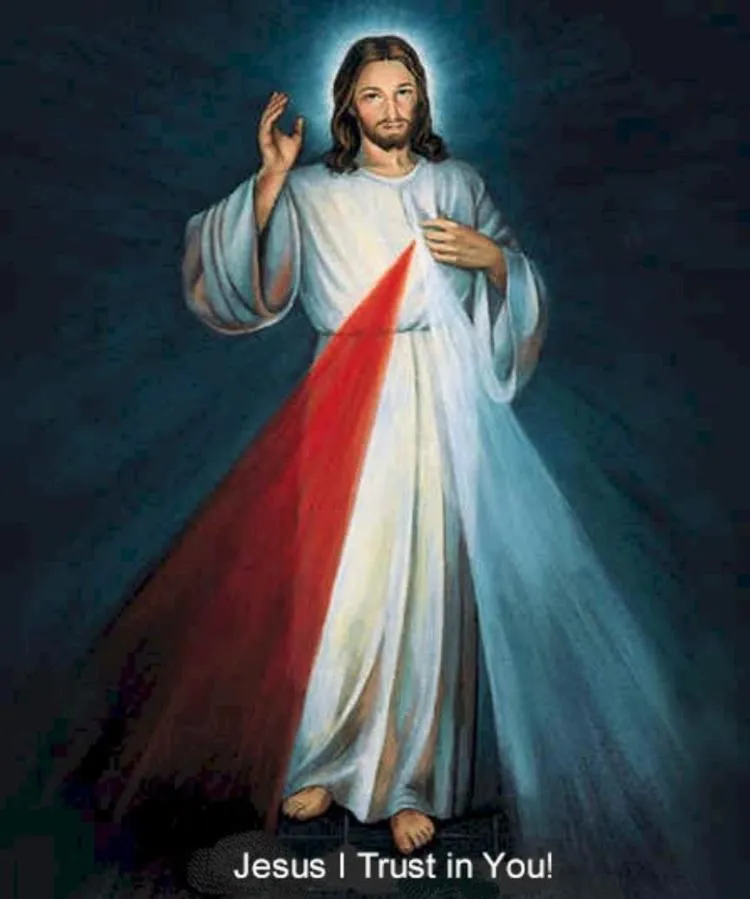
This post will focus on constructing the red and white rosary. You can learn more about Saint Faustina and the Chaplet of The Divine Mercy at https://www.thedivinemercy.org/message/devotions/chaplet-history

To construct the rosary, you will need 100 inches of black #550 paracord (I used 120 inches, to be safe). You will need 27 white beads and 26 red beads for the "Hail Marys". Also, not pictured, I used six gunmetal beads for the "Our Father" beads. Since we will be passing two thicknesses of cord through some of the beads, they should have large holes (5.5 mm)
You should also have a crucifix to attach. I recommend using a 9 mm split ring rather than the jump ring that normally comes attached, because the split ring is more secure. You'll need scissors to cut your cord to length, and a lighter to burn the ends to prevent fraying and, later, to finish the rosary.
Two optional, but very helpful tools are a rosary knotting tool and a split ring pliers. I bought my rosary tool on Amazon.com and my split ring pliers at Hobby Lobby. The paracord can also be found at both sources.

I bought my 1-3/4 inch crucifix at a local Catholic thrift shop, but these can be ordered online. I ordered my beads from Favored Memories: white, red, and gunmetal.
One more optional piece for this rosary is a Divine Mercy medal. I purchased mine from AgnusDeiJewelry.
Let's get started. Begin by attaching the split ring to the crucifix and passing the cord through the ring. Position the ring at the halfway point of the cord, then slide it over to make one side of the cord longer because we will have three decades of Hail Marys on one side and two on the other.
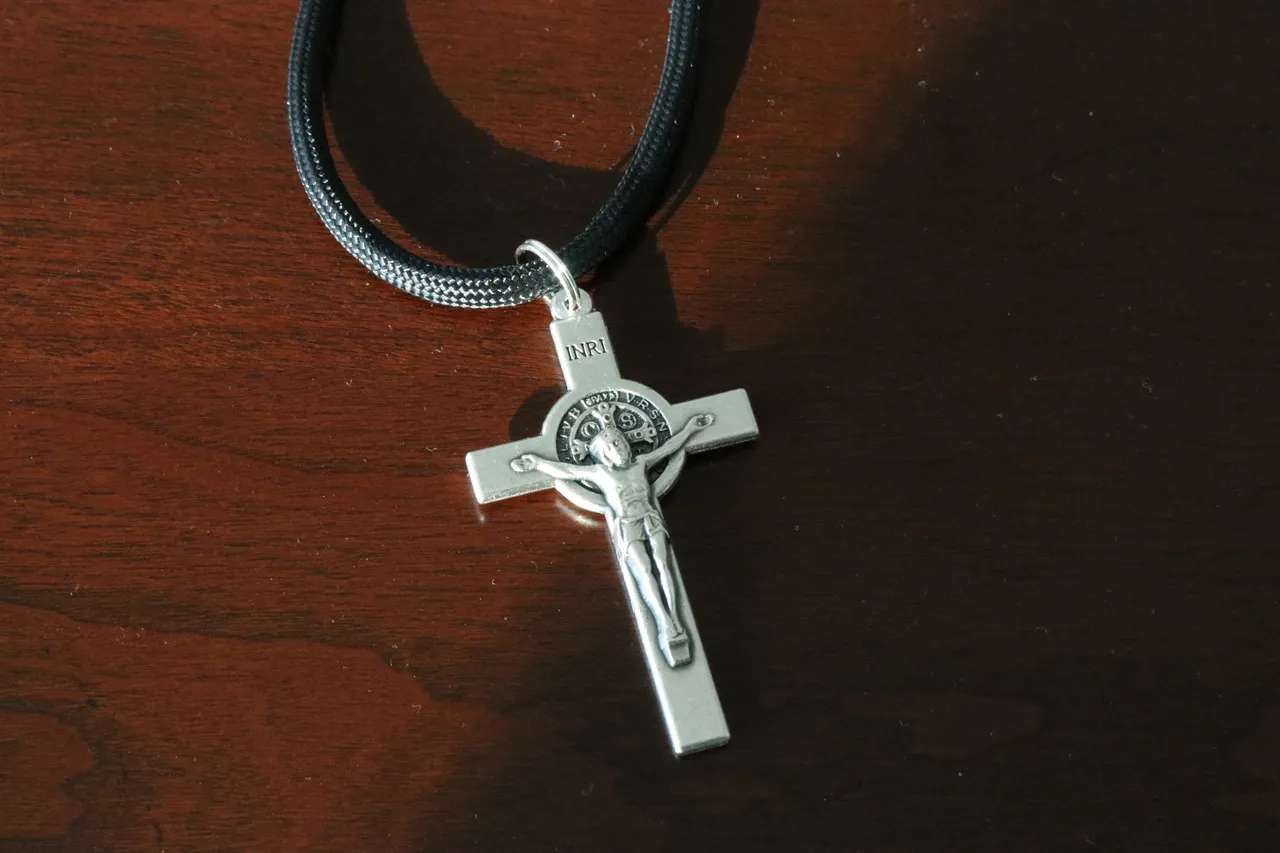
Position the crucifix against the back of your hand, and pass the cords on each side of your long finger.
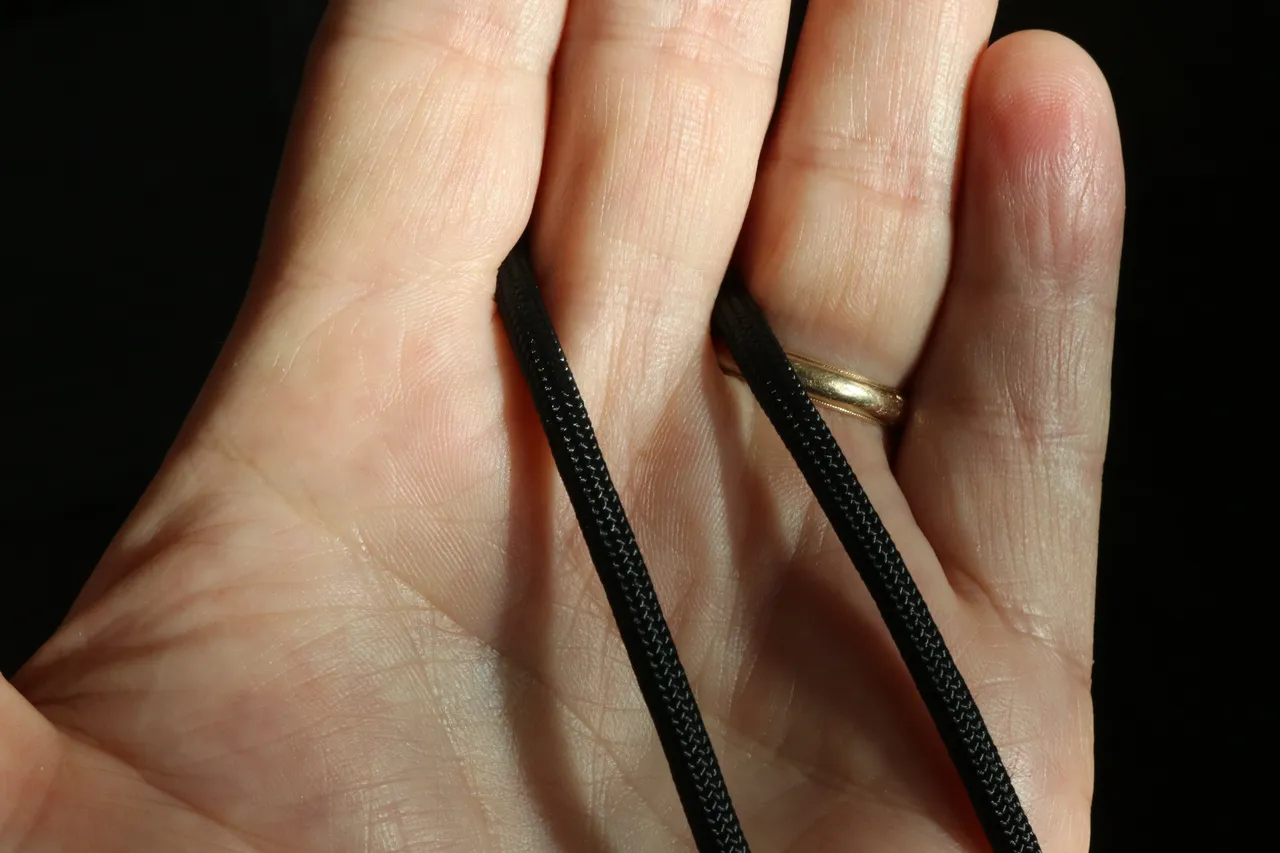
The following steps will tie a two-stranded diamond knot. Begin by making a loop in the right strand that looks like this:

Next, take the left strand under the right strand, then over the right side of the loop, under itself in the middle of the loop, and then over the left side of the loop:
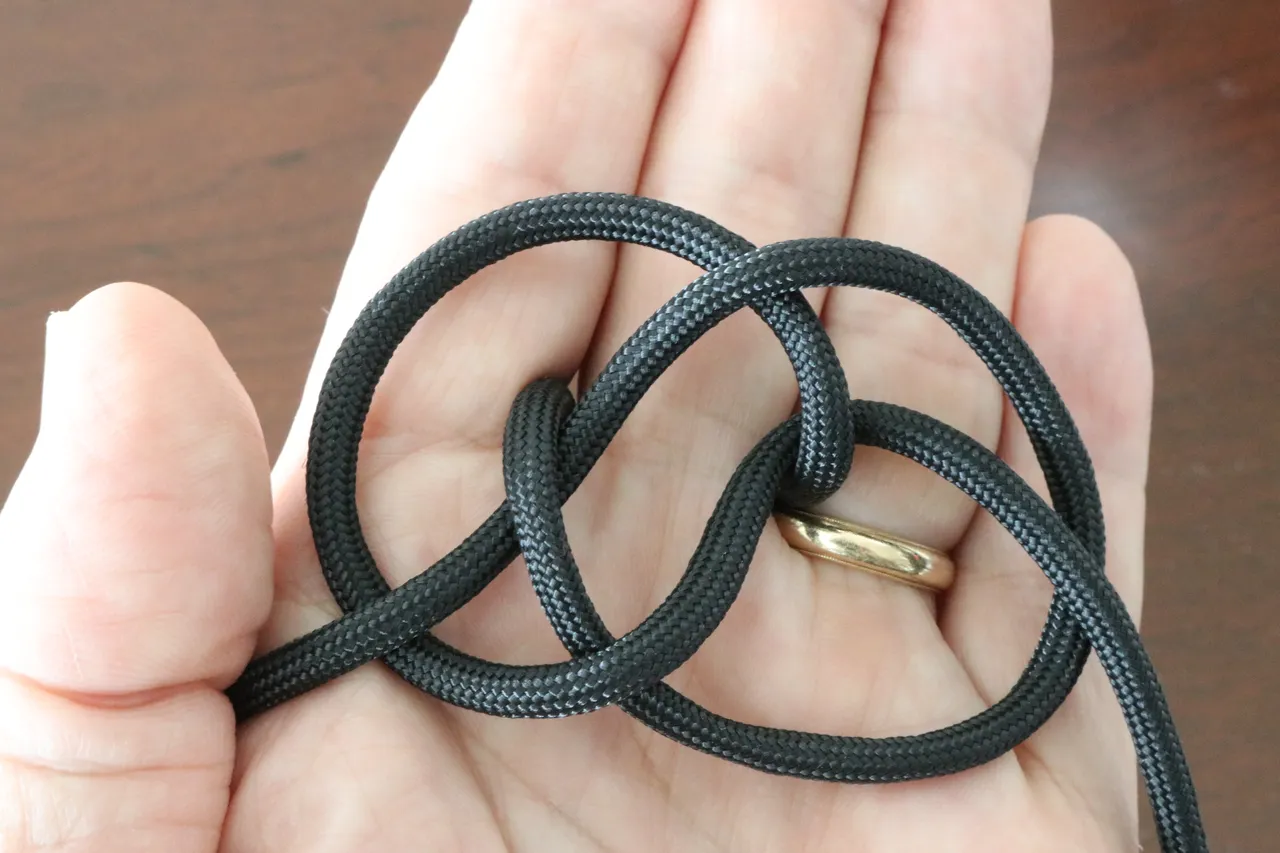
Continue with the left strand, taking it around counter-clockwise, under the right strand and the loop, past the origin of the right strand and up through the center hole:
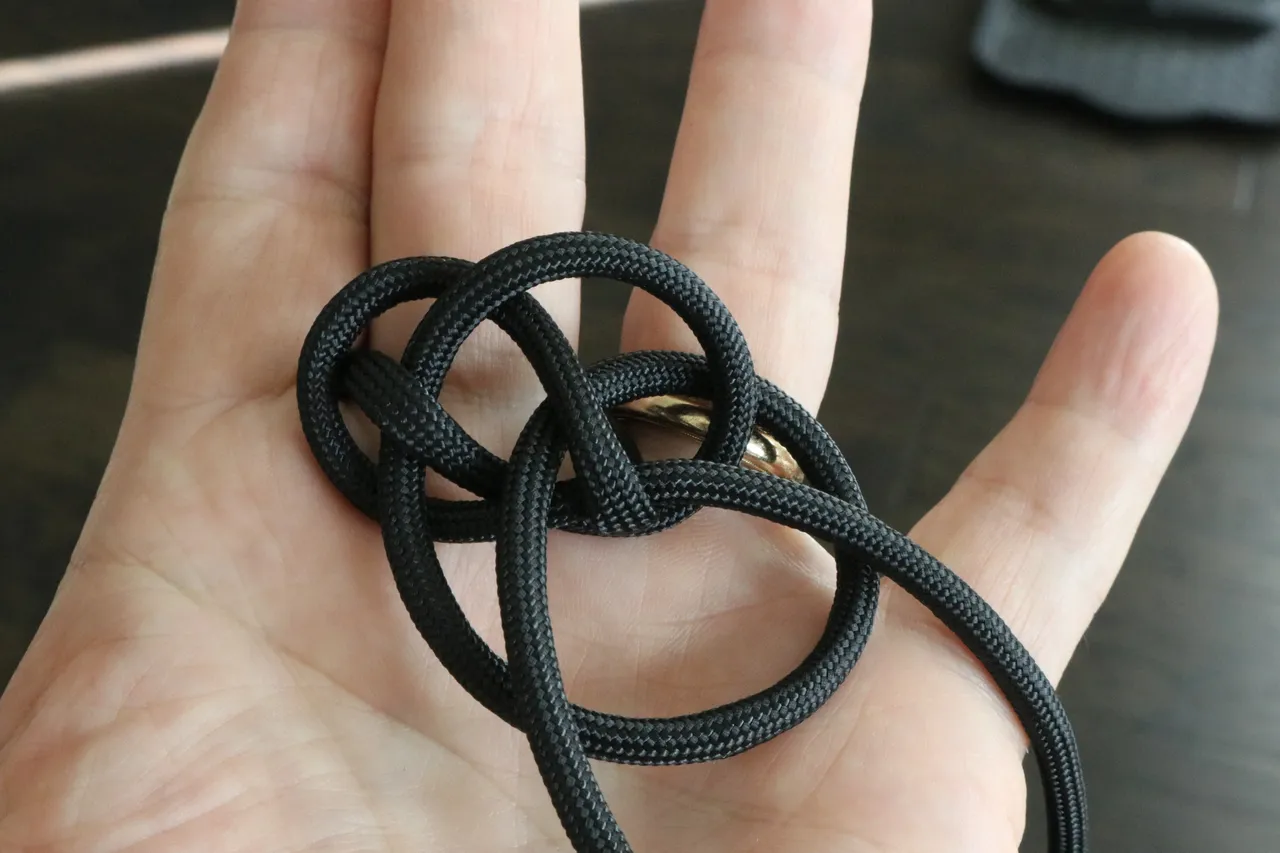
You're done with the left strand. Now, take the right strand counter-clockwise under all the parts, past the origin of the left strand and up through the same central hole:
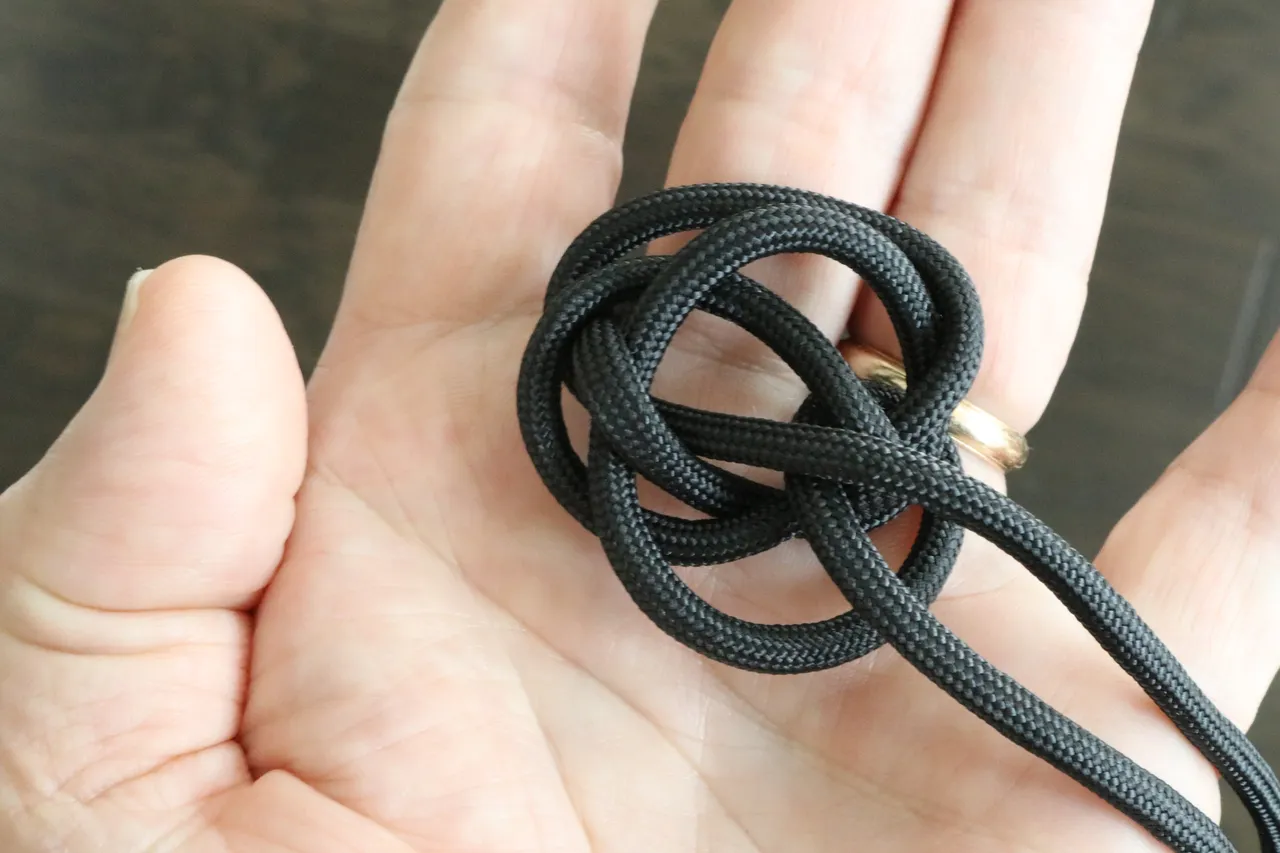
You now have a loose double-stranded diamond knot:

Carefully pull the strands through to adjust the crucifix loop to your desired size and pull carefully to tighten the knot:
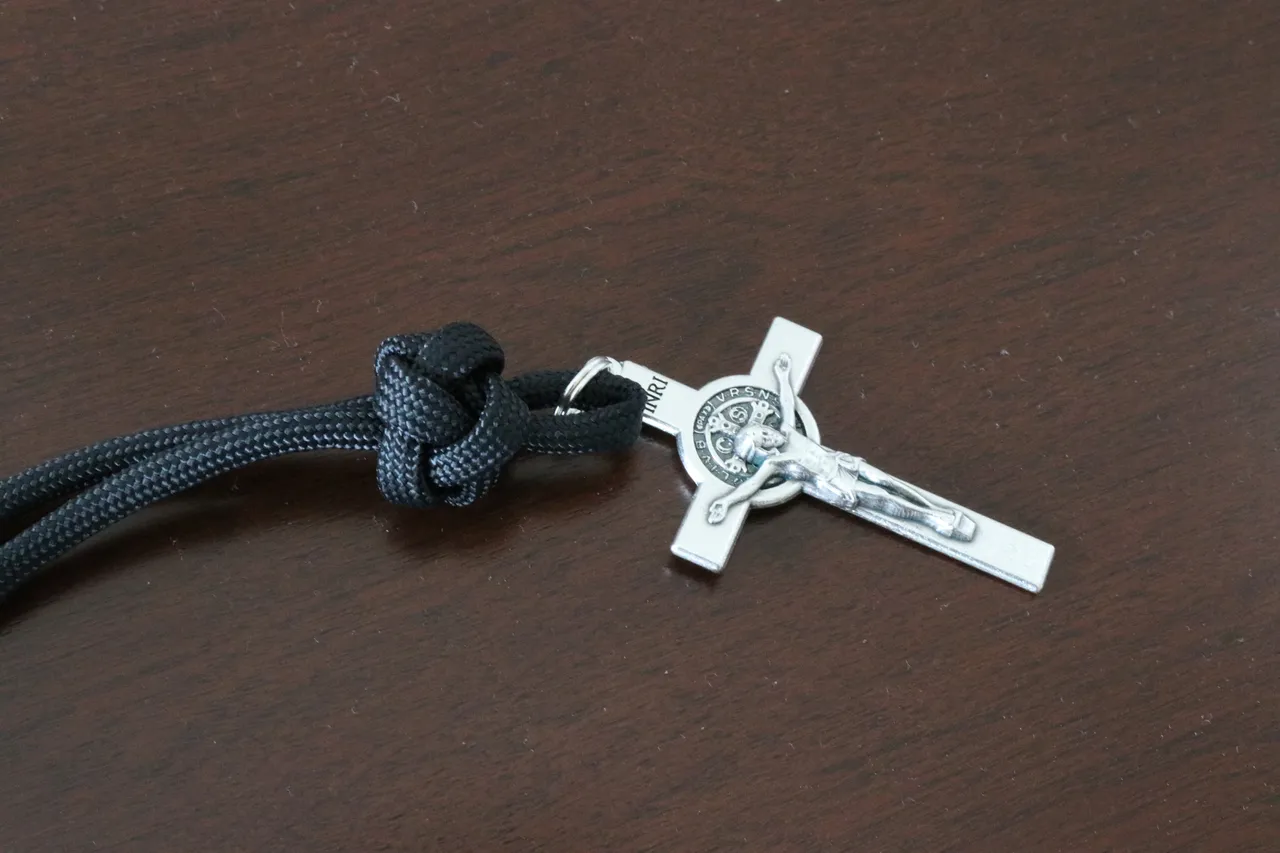
Gather your beads. It's time to start adding them, starting with an Our Father bead, gunmetal in this case. Pass both strands through the hole in the bead. You might have to trim, angle, and burn your cords to make stringing easier:

Next, we tie a barrel knot. This is where the rosary tool helps, but I'll show you how to do this without the tool as well. Wrap both cords around the tool:

Then continue wrapping the cords over themselves:
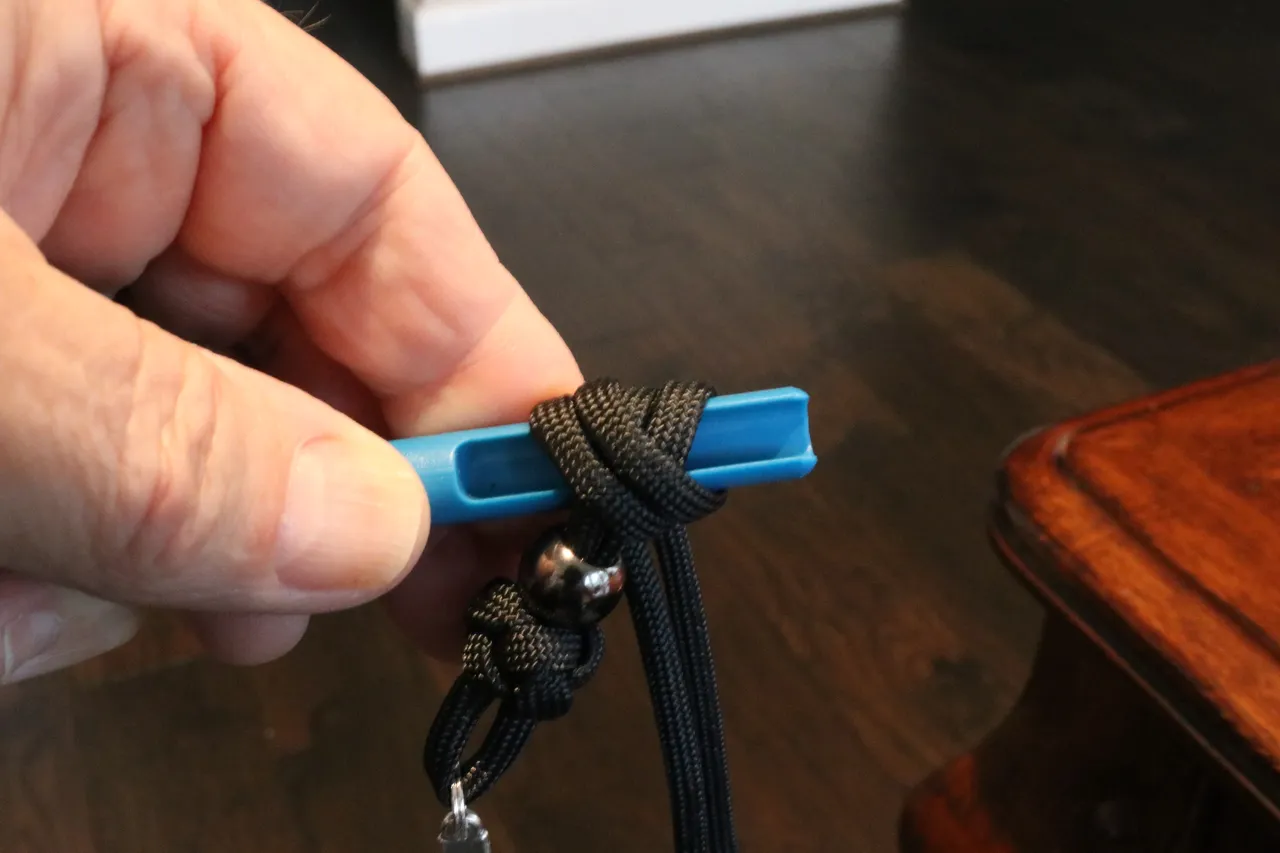
And wrap the cords around themselves a second time but, this time, pass the cords through the channel of the rosary tool:
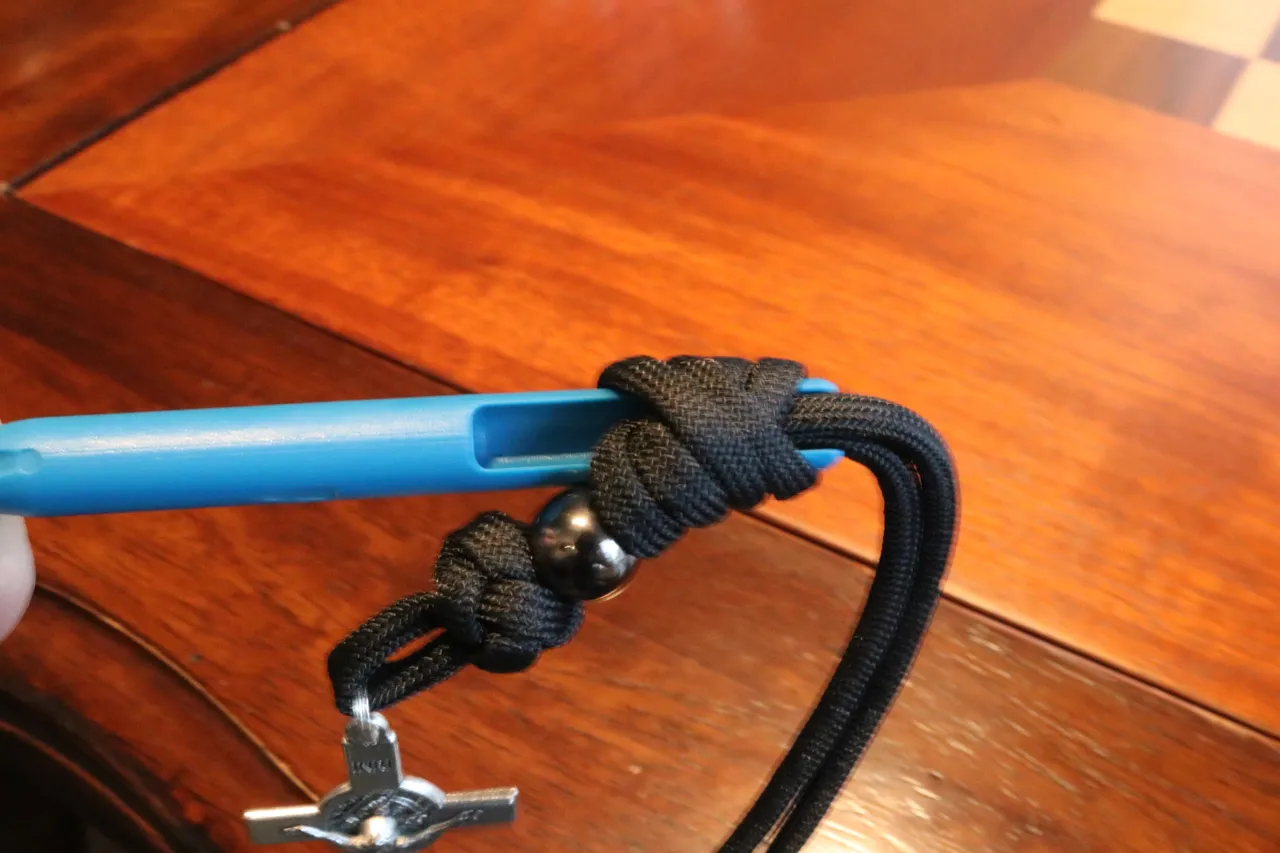
Carefully pull the cords to tighten the knot and to move it tightly against the first bead:

Add a white, red, and white bead and tie a second barrel knot, this time not quite as snug against the beads to allow a little space between them to make it easier to count them while praying (this may be my personal preference though).
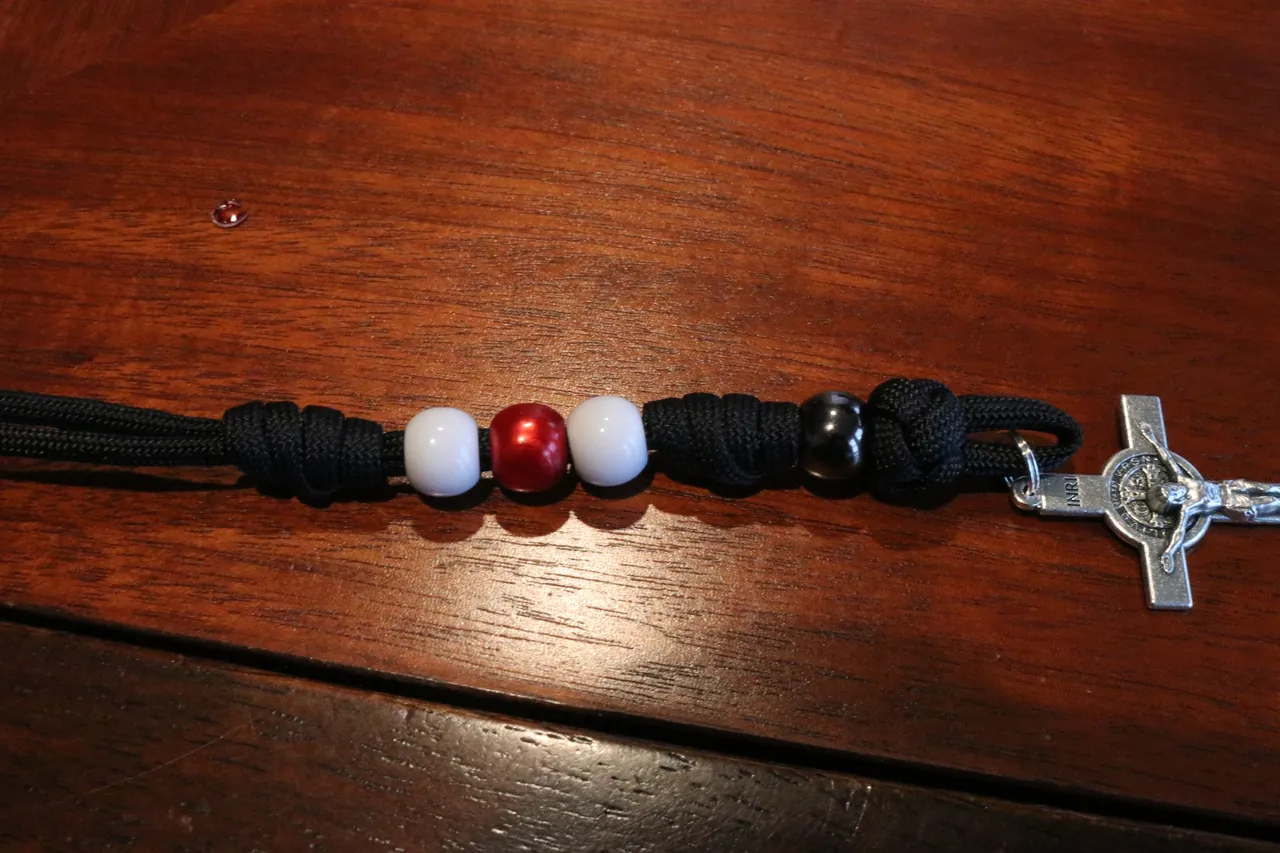
If you don't have a rosary knotting tool, here's how you tie a barrel knot by hand. Begin by draping the cords over your first two fingers as shown, and wrap the upper cord around both cords and over the top:
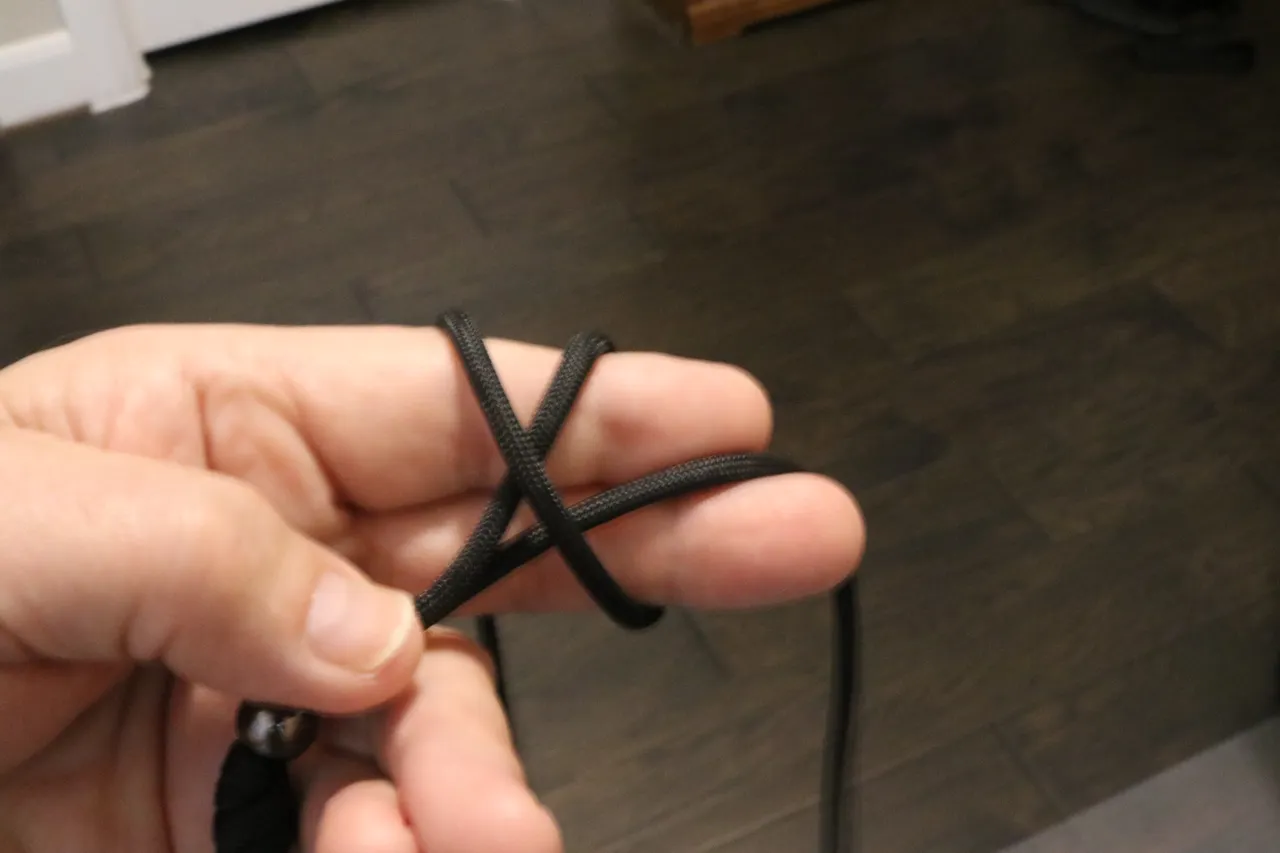
Continue wrapping the upper cord a second and third time, passing the cord out through the loop that you've created:

Carefully slip the knot off your fingers:
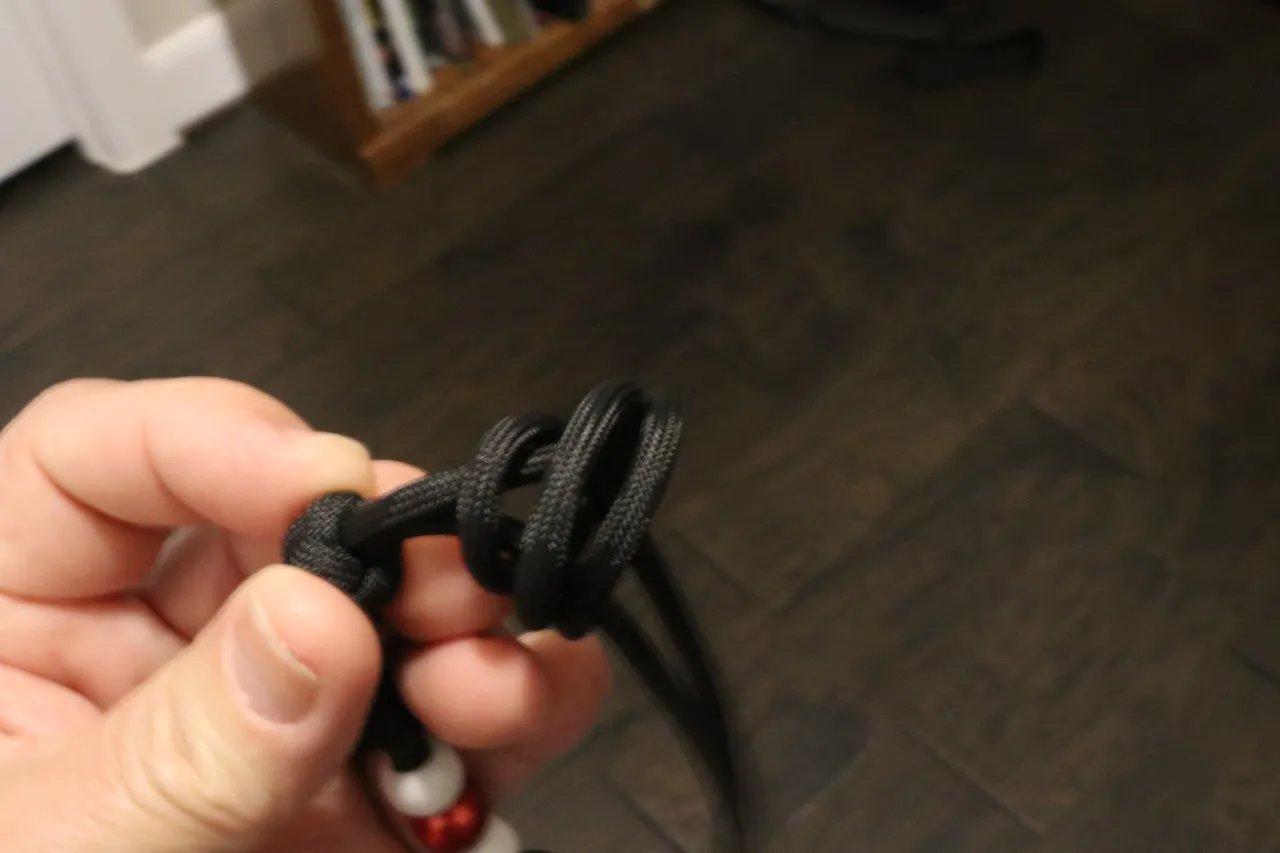
Pull the cords and work the knot into shape and location:
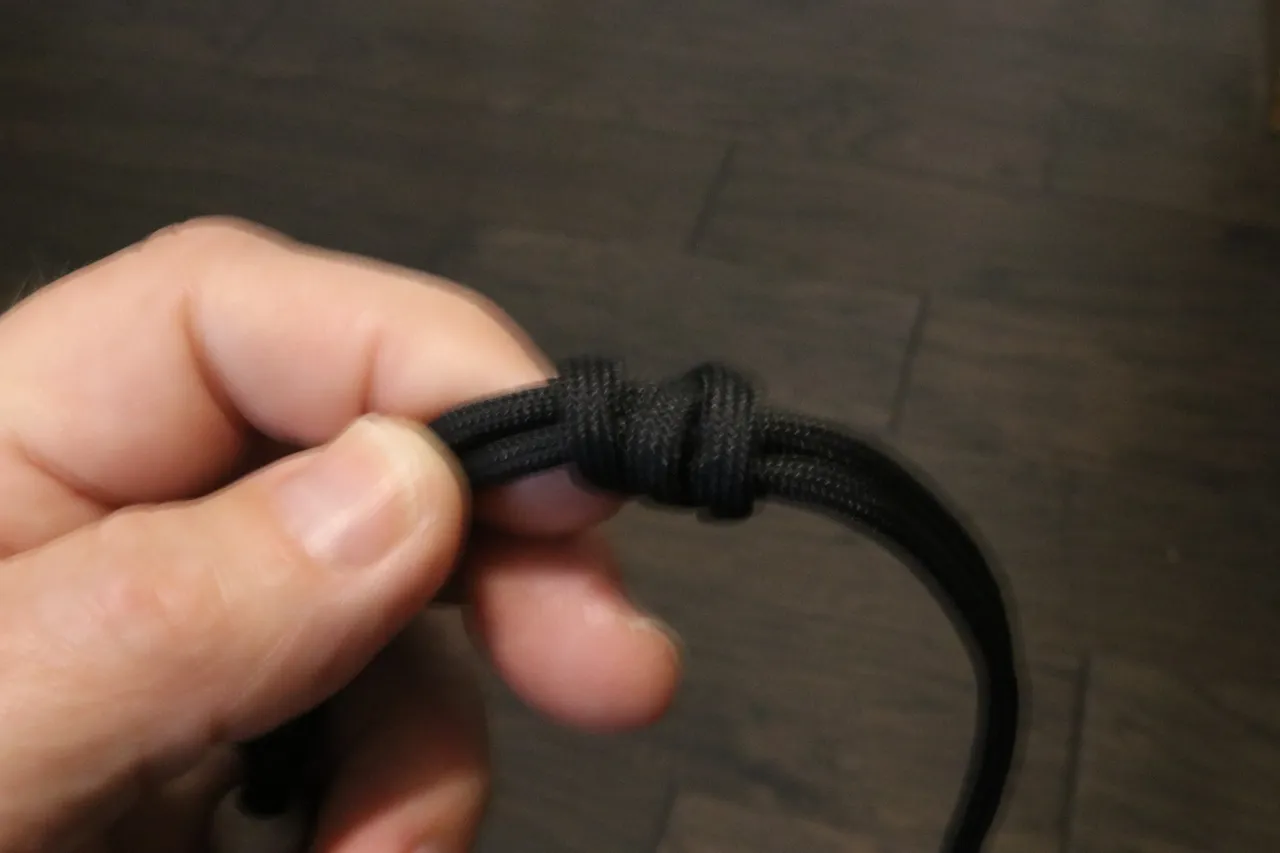
Add the next Our Father bead (gunmetal color in this case), and tie another double-stranded diamond knot. Now it's time to create the centerpiece of the rosary and begin to work with single strands. I'm not positive about the name of this knot, but I have heard it referred to as a Celtic Heart Knot. Start by draping both cords over your first two fingers, creating a loop in the right cord by looping the cord over itself:
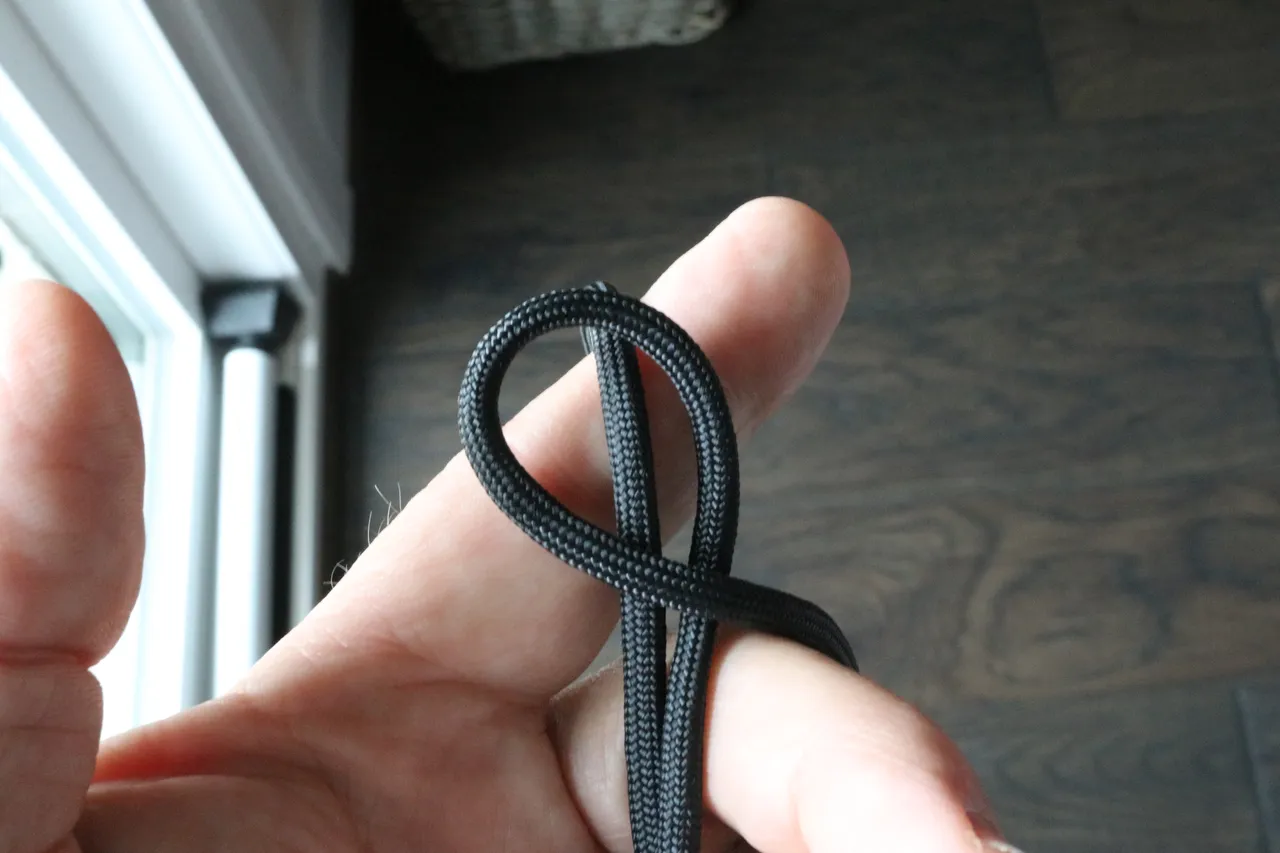
Bring the left cord over the right cord:

Then under the right cord (between the cords):
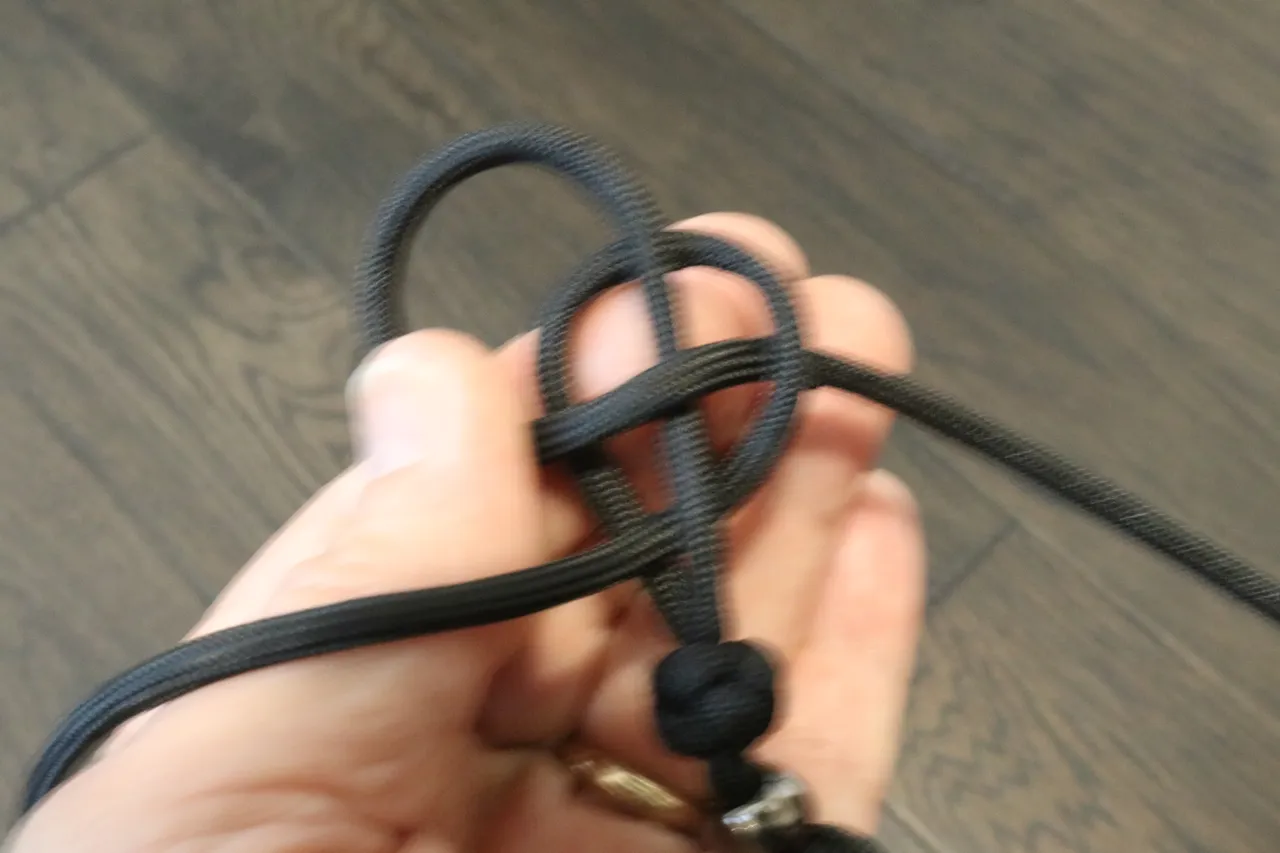
Then over the right cord, under itself, and over the right cord again (the left side of the loop):
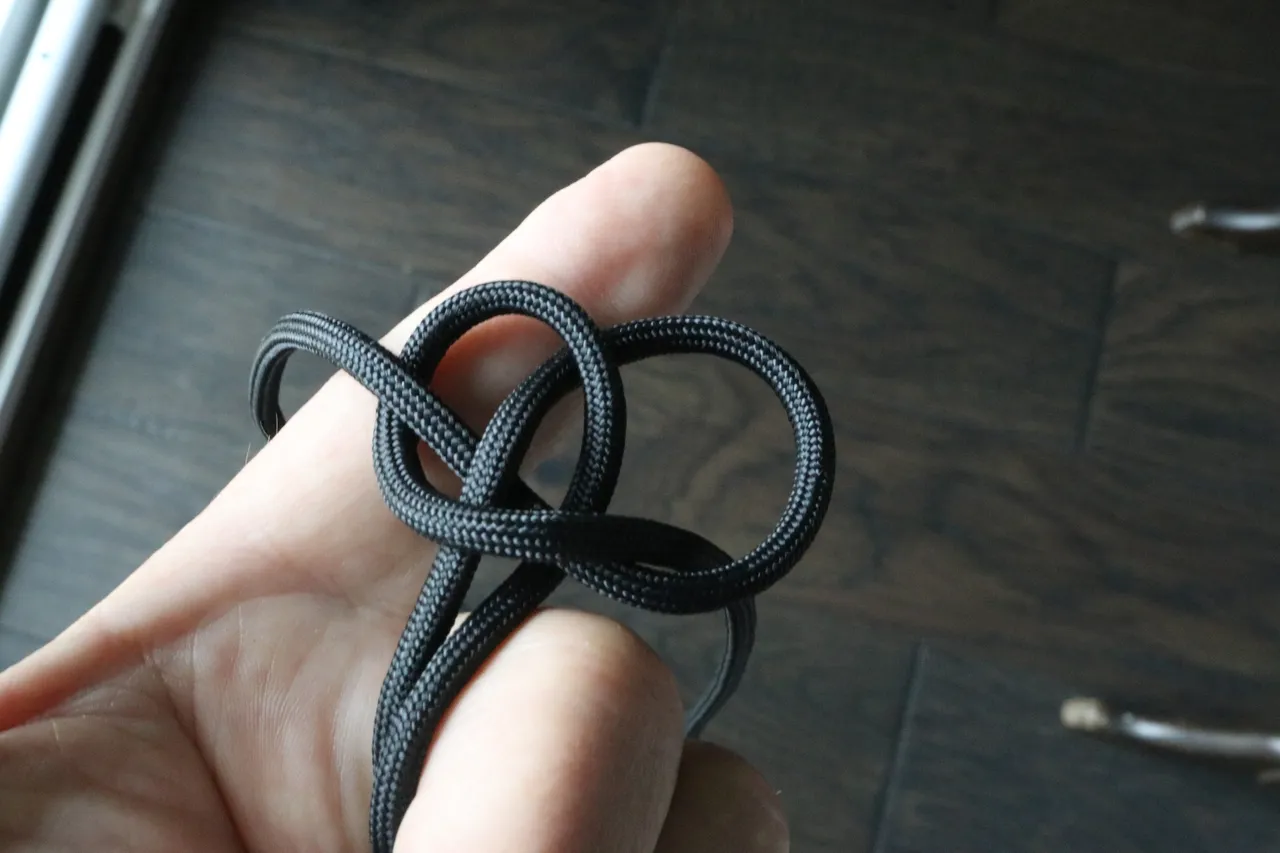

Gently pull the cords to tighten the knot, taking care to keep the knot flat:
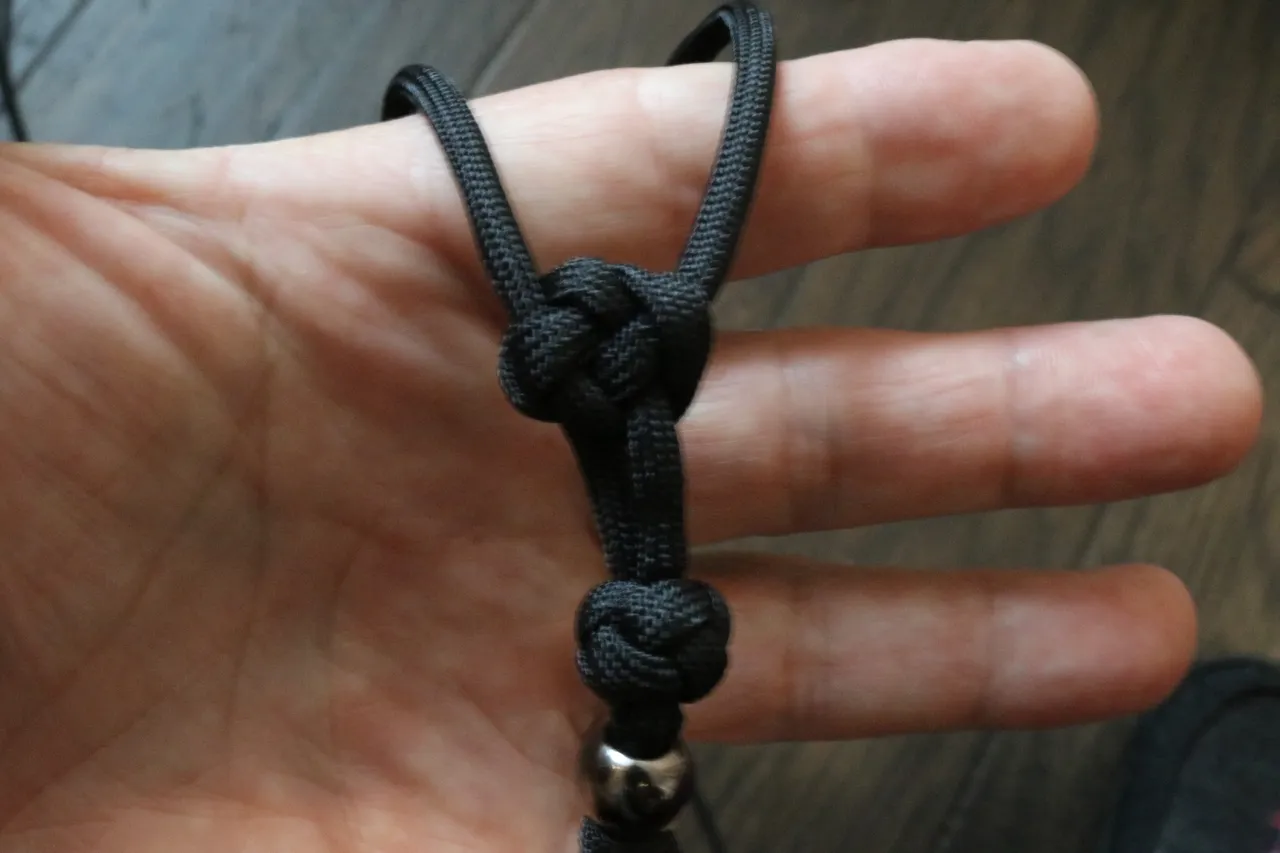
At this point, you can add a medal, if you choose. Then tie a simple overhand knot in each loop, trying to match their positions.

String ten white Hail Mary beads on the right strand, and tie a barrel knot.
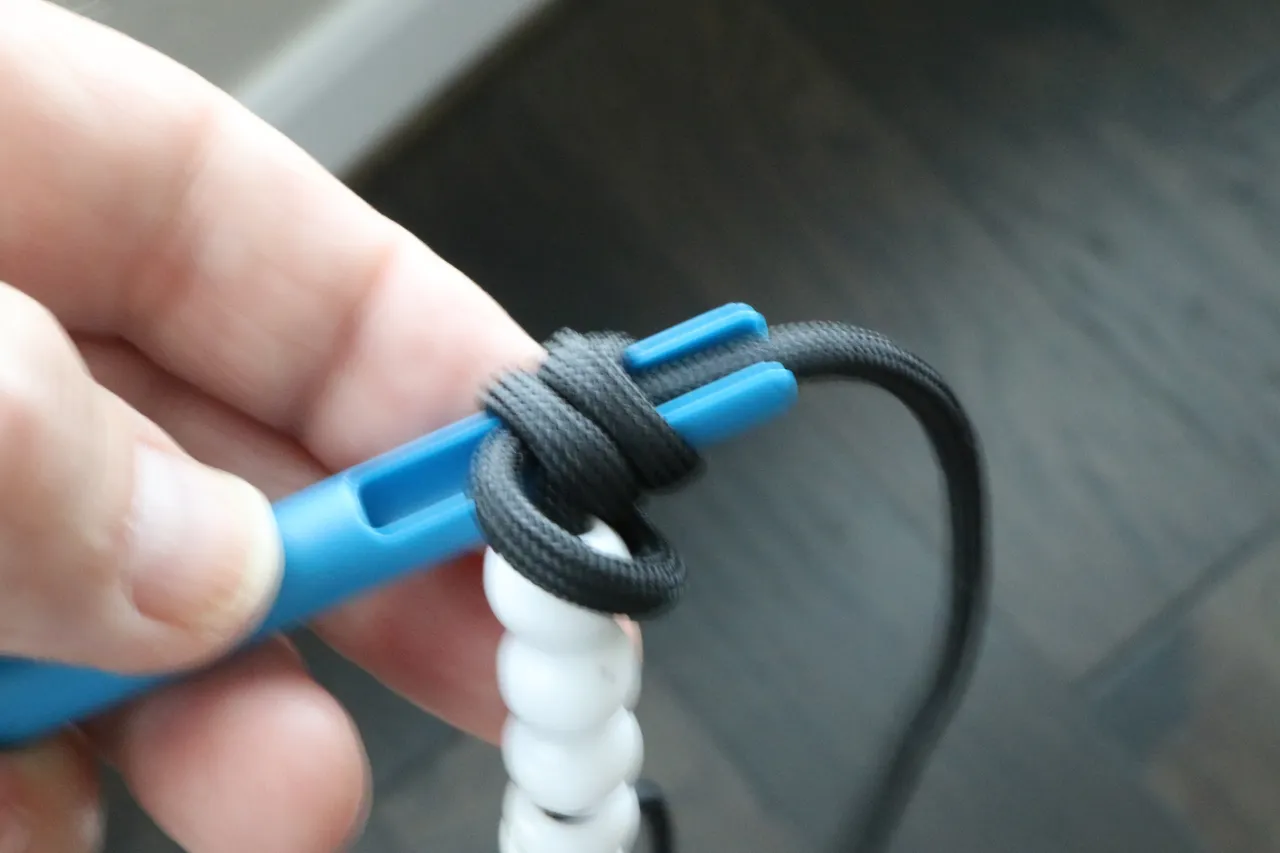

Add an Our Father bead and tie a barrel knot (shown here without using the rosary knotting tool):

Add a second decade of white Hail Mary beads on the right, followed by an Our Father bead, separated by barrel knots. String a decade of red Hail Mary beads and an Our Father bead on the left:
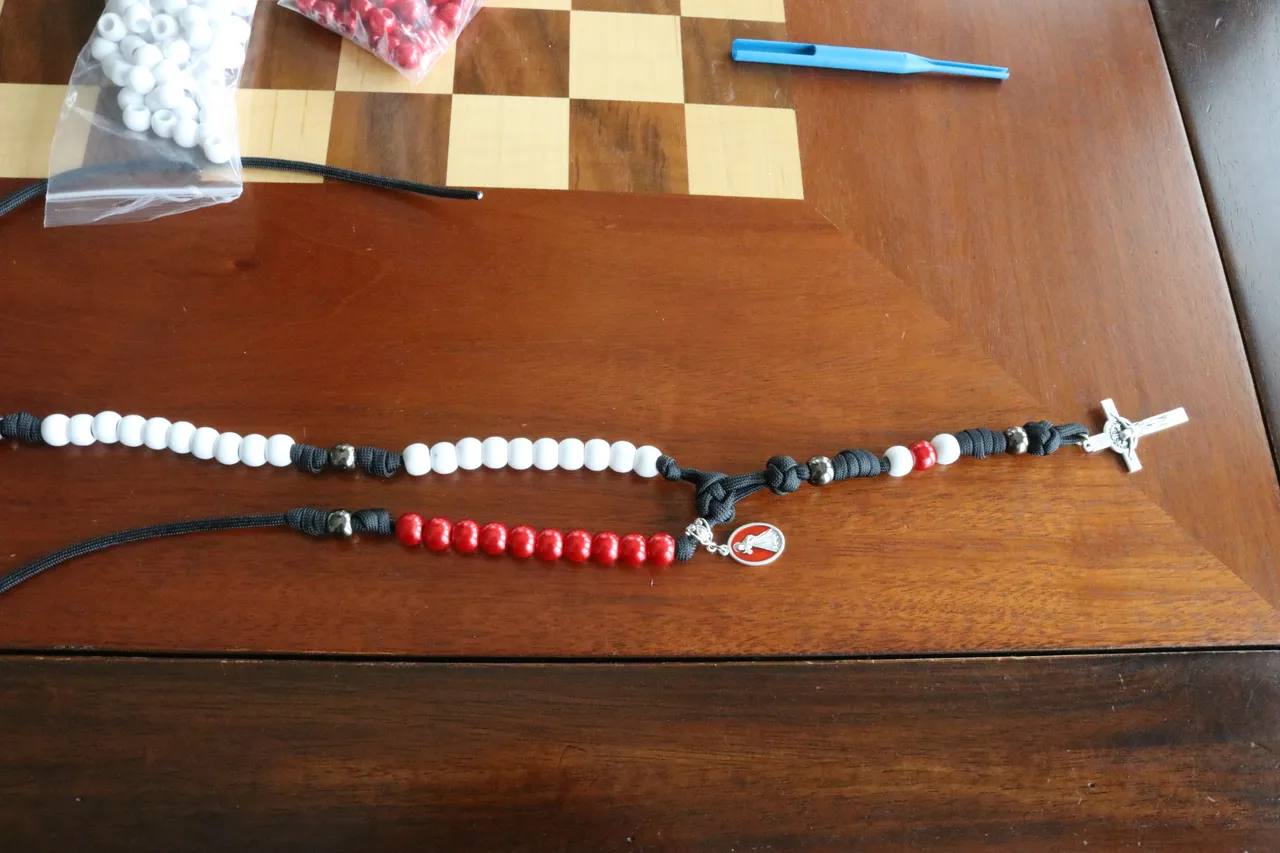
In order to be able to finish the rosary, we will add a second decade of red Hail Mary beads on the left (lower strand in the image), a barrel knot, and finally an Our Father bead without tying a barrel knot after it. On the right, string five white Hail Mary beads and five red Hail Mary beads, again not securing them with a barrel knot.
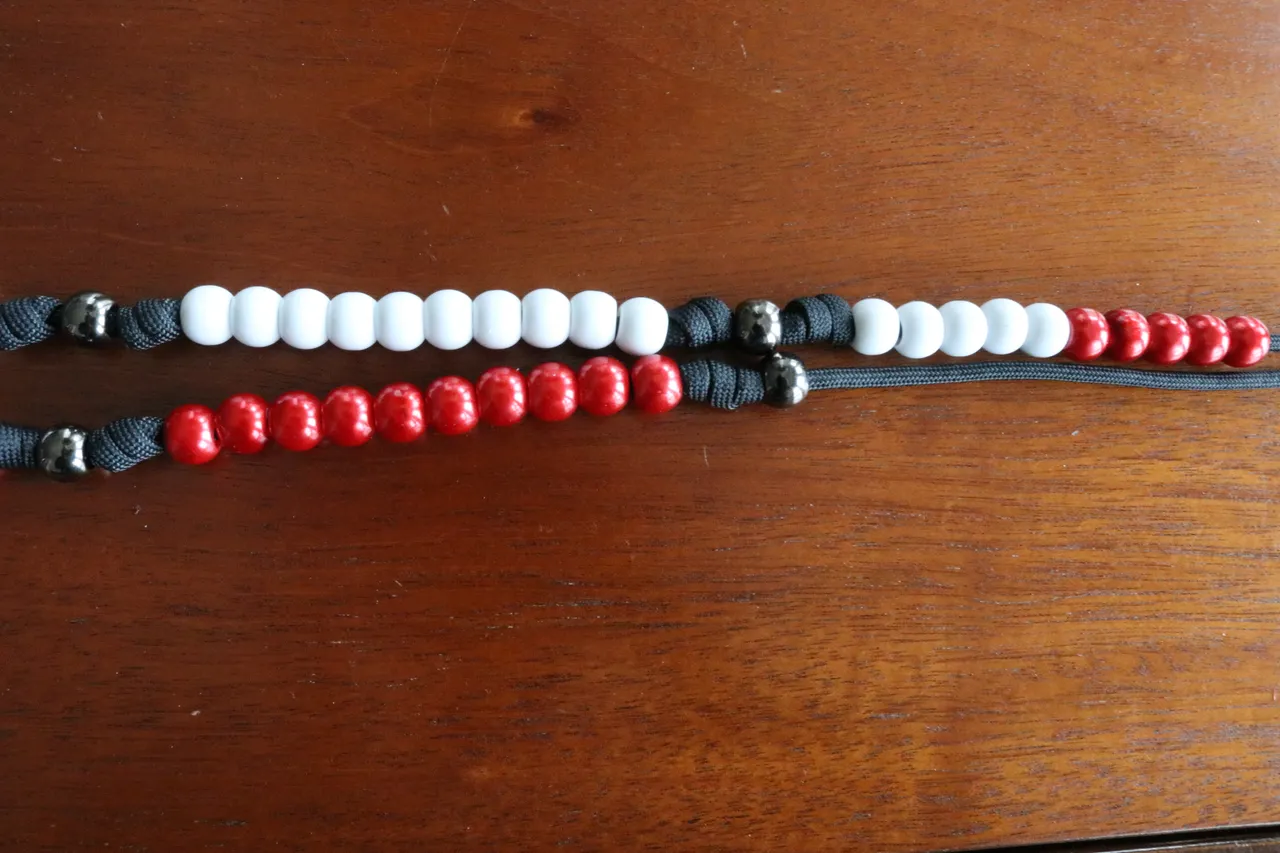
Now, we'll tie a barrel knot on one side. However, we will also pass the other cord backwards through the knot:

Pull the knot tight. Cut both cords leaving a stub. Burn the ends and, while hot, flatten them to create an anchor to keep the end from pulling back through the knot:


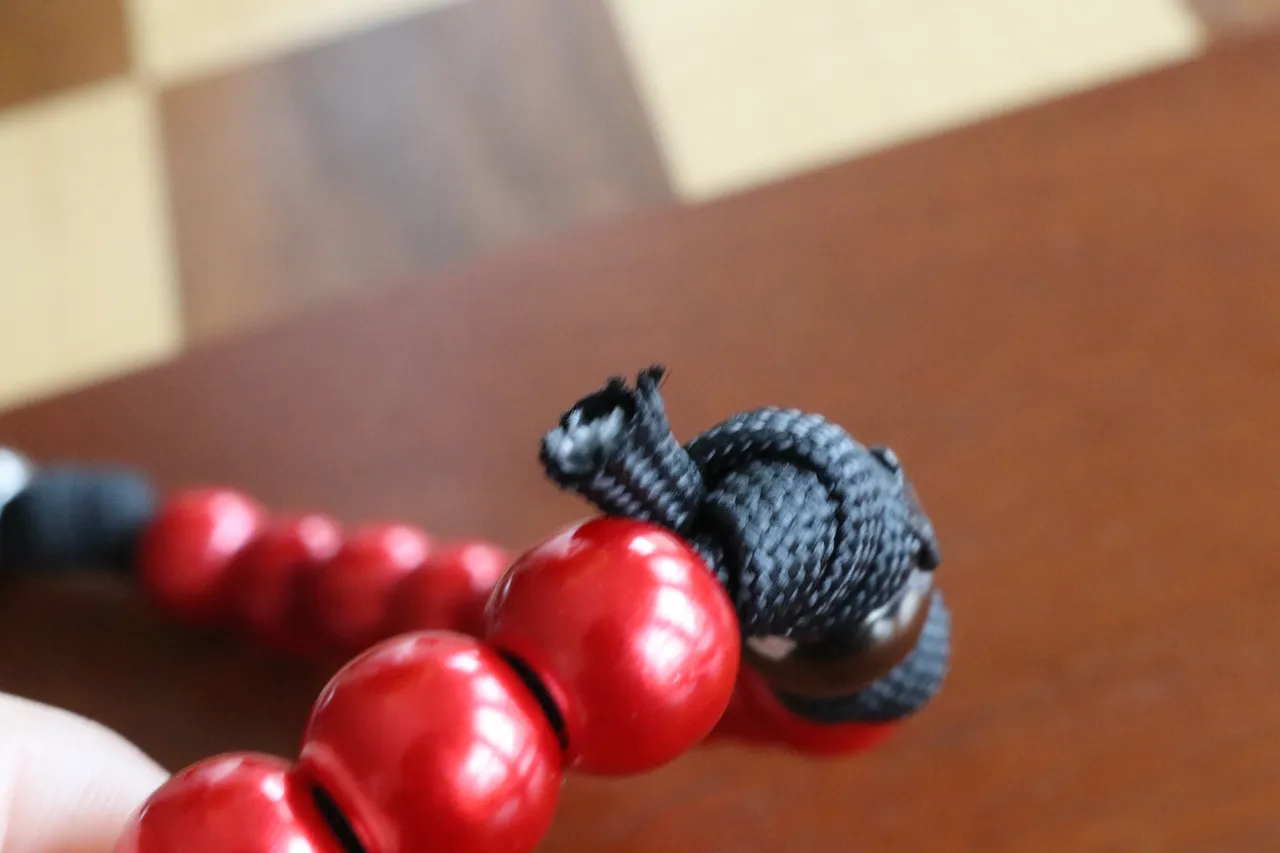

If all went well, you now have a Chaplet of The Divine Mercy rosary. Have it blessed by your priest and pray it often.
